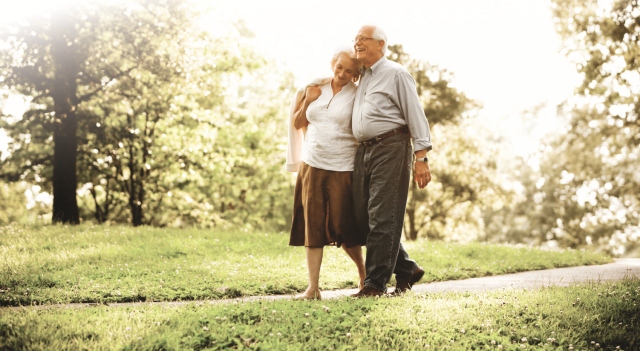
As you grow older, an active lifestyle is more important than ever. If you are struggling with activities of daily living, you may want to consider assistive or personal care services. Self-care assistance can help you incorporate and maintain a basic exercise regimen to prevent or reduce the risk of many health conditions, which can positively affect the length of your life.
A study by a team of researchers from National Cancer Institute, part of the National Institutes of Health, found that people who engaged in leisure-time physical activity had life expectancy gains of as much as 4.5 years.
The health benefits of regular, moderate exercise can’t be overstated: it can help lower your risk of heart disease, stroke, type 2 diabetes, and some types of cancer. An active lifestyle can also improve your strength and balance so you can prevent injuries and stay independent, reduce symptoms of depression and stress, and improve your ability to think, learn, and make decisions.
With so many health benefits, exercise should be a priority in everyone’s life, but, unfortunately, that’s not the case. Some people feel discouraged by illness, ongoing health problems, or concerns about injuries or falls. Regardless of your health status, your fitness level, or your inexperience with exercise, you can safely work energy-boosting, heart-healthy, mood-enhancing exercise into your week!
So, let’s get moving!
Here are some tips for getting the most out of an exercise routine:
- Evaluate your health status It’s wise to speak with your doctor before you begin any exercise regimen. Ask if there are any special precautions you should take to keep safe or if there are any activities you should avoid based on your current health and fitness level.
- Start small Enthusiasm is great, but trying to do too much too soon can derail your efforts by causing an injury or over-stressing your muscles. If just starting out, walking is an easy activity to get you moving. Even 10 minutes a day, twice a day, will do your body a world of good. “No pain, no gain” does not apply; stop if you have pain or shortness of breath. Check with your doctor before resuming activities.
- Choose activities that are fun for youThe more you enjoy what you are doing, the better results you’ll get. If you like to work out in a gym, that’s great. But if you prefer tennis, swimming, or biking, then choose those instead. Do you like to dance? Go for it!
- Recruit a workout buddy Exercising with a companion is always more fun and motivating. Plus, it helps keep you accountable.
- Focus on short-term goalsFor people who want to lose weight, for example, the thought of reaching their ultimate goal can be overwhelming. Instead, set short term goals or focus on other benefits like increased flexibility, improved balance, and enhanced mood.
- Alternate 'easy day' and 'hard day' workouts Once you get in an active groove, you’ll get greater benefits by alternating more intense workouts with easier ones. For example, if you walk one day for 40 minutes, only walk 20 minutes the next day. It’ll give your body a chance to recoup while still remaining active.
- Mix it upAs much as you may enjoy walking, your routine get can get, well, routine. Adding in a variety of different activities is a great way to keep you motivated. So, instead of your morning walk, how about taking a swim or a doing a yoga class?
- Join a gym or classThere’s nothing like participating in a group activity to keep you going. It’s fun and social. Who wants to be asked, “Where were you?” when you didn’t show up in favor of sitting on the couch?
- Seek expert adviceA personal trainer can help design an exercise routine that’s tailored just for your personal fitness level and wellness goals. A trainer can also teach you how to perform exercises safely to ensure you won’t fall or injure yourself.
- Be active all day longEven if you’re not formally exercising, you can still keep active. Choose stairs over the elevator or park at the far end of the parking lot when arriving at appointments and meetings. Home chores like gardening and vacuuming are opportunities to keep your body moving and accomplish tasks at the same time.
Resources for fitness information can be found by visiting the SilverSneakers® Fitness Program website.
SilverSneakers® helps older adults take greater control of their health by providing support, education, and access to participating fitness centers. Many health plans offer SilverSneakers to people who are eligible for Medicare or to group retirees.
To learn more about personal care for help with physical activity or tasks of daily living, contact us today.
View our website today for more useful information.


No comments:
Post a Comment